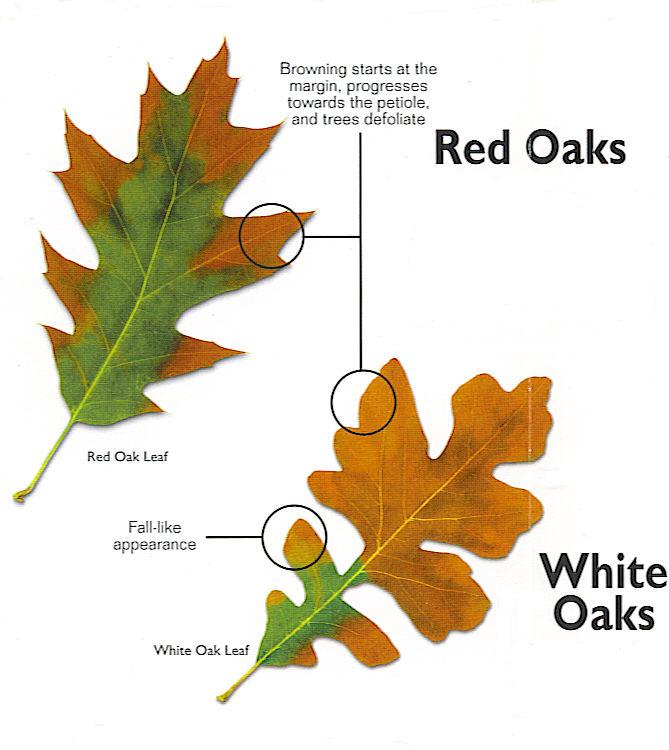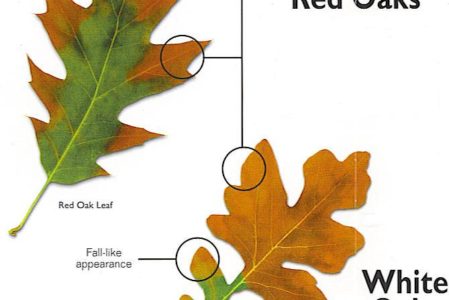
Oak wilt is a disease that afflicts red and white oak species. It is seen more commonly on red oaks and can affect them quite seriously. It is essential to identify and treat this disease as soon as possible to prevent the spread of this disease and rapid tree loss.
What Causes Oak Wilt?
Oak wilt is caused by a fungus. The specific fungus identified with this disease is Ceratocystis fagacearum. The fungus invades the xylem vessels found in the leaves. Trees attempt to stop the spread of the disease by plugging up these vessels, which stops the flow of water and nutrients to the leaves and causing them to wilt. Symptoms typically occur in the mid to late summer and will rapidly progress.
Signs of Oak Wilt
Oak wilt begins at leaf tips and margins, moving toward the center of the leaf. Signs of marginal water soaking accompany leaf browning and scorch-like bronzing, with leaves wilting from the top down and outside in. Once effected, leaves drop rapidly, particularly on red oaks. Sapwood may also be discolored, turning gray-brown to black within outer rings, though this can be difficult to detect in red oaks.
Note: A yellow or dull brown halo between scorched and healthy tissues denotes bacterial leaf scorch, not oak leaf wilt.
Long-Term Effects
This disease has a poor prognosis and is fatal and fast-moving. Red oaks can succumb in less than three weeks. Progression is slower in white oaks, advancing in 1-5 years.
Treatment Options
Oak wilt can spread above and below ground. To thwart disease progression, trenching around diseased trees to sever root connections to healthy trees is crucial. Preventing damage while using your ProLine Grabber and Forques can also stop the spread of this disease, which is known to infiltrate via injuries. All infected trees within the barrier line should also be removed to prevent overland spreading by sap beetles. Application of restricted-use biocidal chemicals by a licensed pesticide applicator trained in their use may also be employed in critical situations.
Tips for Avoiding Oak Wilt
You can reduce the likelihood of oak wilt by:
- Avoiding pruning or wounding oaks during periods of peak incidence of infection (April-June).
- Quickly removing infected trees and properly treating wood.
- Injecting fungicides into high-value trees without active symptoms. This treatment offers protection for 2-years post-injection.
NOTE: This will not stop the progression in trees already infected.
Prevent the spread of oak wilt with the careful management of trees. ProLine equipment not only speeds tree planting, removal, and shipment but is specially designed to protect your precious trees. Learn more about our extensive line of tree moving and planting equipment today.

